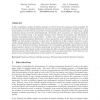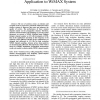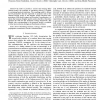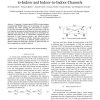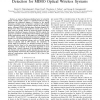93 search results - page 1 / 19 » Maximum Entropy MIMO Wireless Channel Models |
CORR
2006
Springer
13 years 4 months ago
2006
Springer
In this contribution, models of wireless channels are derived from the maximum entropy principle, for several cases where only limited information about the propagation environmen...
JCM
2008
13 years 4 months ago
2008
The use of antenna arrays at emission and reception seems to represent a prominent solution for future wireless systems, it improves data rates and enhances the quality of service....
TCOM
2010
12 years 11 months ago
2010
In order to provide a concise time-varying SISO channel model, the principle of maximum entropy is applied to scattering function derivation. The resulting model is driven by few p...
VTC
2010
IEEE
13 years 2 months ago
2010
IEEE
- Compared to classical spatial MIMO wireless systems, cross-polarized MIMO systems are an interesting way to reduce equipment size while reducing the inter-antenna correlation. Cr...
ICC
2009
IEEE
13 years 11 months ago
2009
IEEE
—A major performance-limiting factor in terrestrial optical wireless (OW) systems is turbulence-induced fading. Exploiting the additional degrees of freedom in the spatial dimens...
